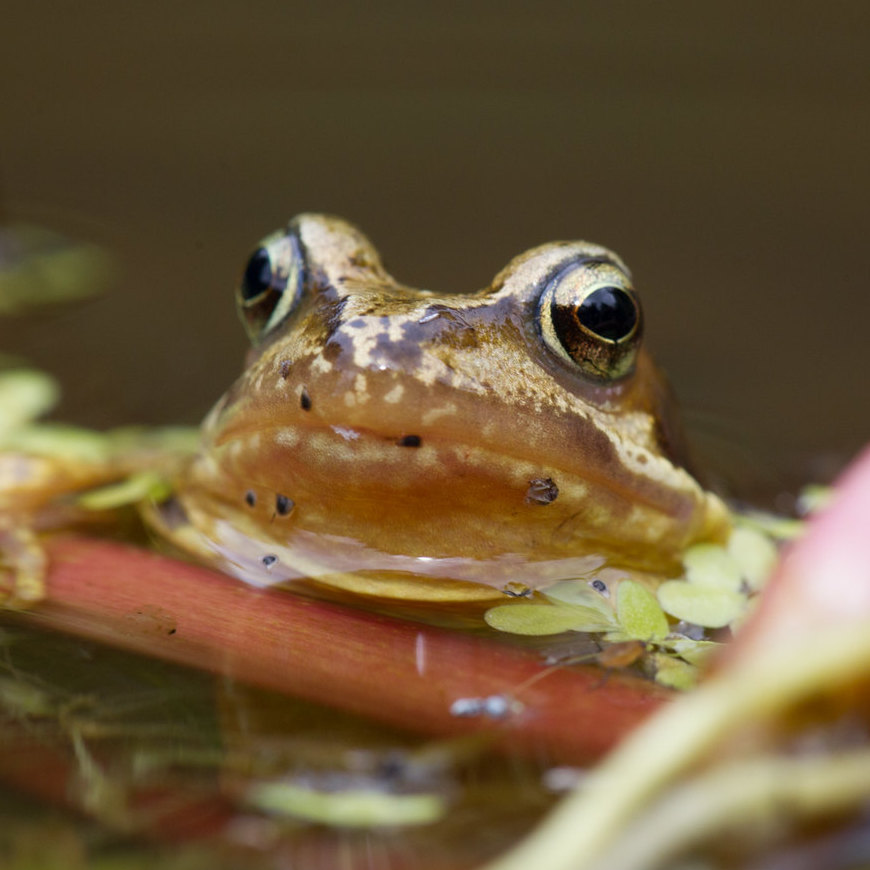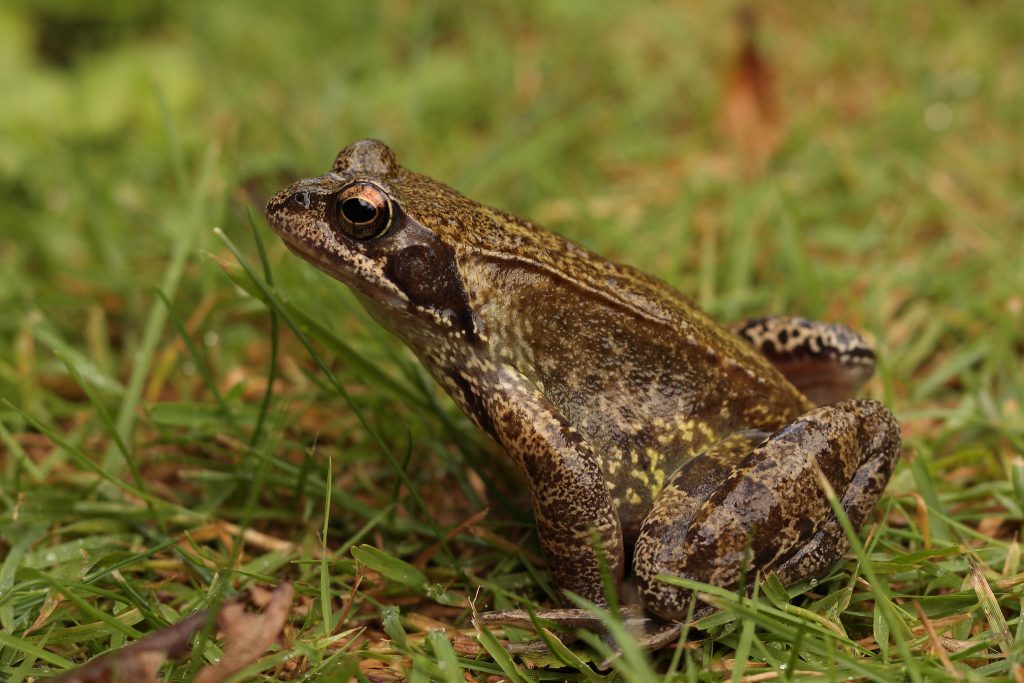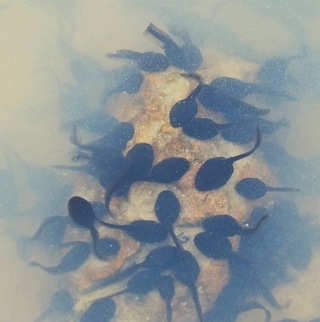
Frogspawn is usually seen very early in the Spring on the Lizard, often as early as January, in pools and even in waterlogged ruts on tracks.
Photo: © Natural England/Allan Drewitt
Scientific name: Rana temporaria
Cornish name: Guilkin, or Cronag Mellin
Other names: European Common Frog, European Common Brown Frog
Conservation status: Least Concern on IUCN Red List; Schedule 5 of the Wildlife and Countryside Act 1981 (sale only); Annex III of the Bern Convention.
The Common Frog, which belongs to the amphibian family Ranidae, can be found across Europe, except for Portugal and much of Spain, Italy and the south Balkans. One of eight species of brown frog in Europe, it is more common than the other seven. It is very variable in colouring and markings: though it is usually brown or greeny-grey, yellow or reddish colouring is not uncommon.
Associated with water, like other amphibians, it generally only uses waterbodies for breeding, producing the frogspawn and tadpoles we all know so well, and sometimes for hibernation, when it stays on the bottom, breathing through its skin. For the rest of the time it is a terrestrial animal, preferring damp places protected from bright sunlight, and with cover to help it in avoiding predators.


A common sight in the Spring is the newly metamorphosed small frogs hopping through the vegetation as they disperse from the natal pond.
Threats to frogs include not only loss of ponds, but also pollution. They are also affected by the diseases Frog Ranavirus and Chytridiomycosis – you can find out more about these from the Pond Conservation site: see the link below.
Did you know…?
…Common Frogs declined drastically in the middle decades of the twentieth century, but have recovered since then partly as a result of increasing numbers of garden ponds.
…Individuals can live for up to ten years.
More information and references:
Arnold, N. and Ovenden, D., 2002. Reptiles and Amphibians: Britain & Europe (Collins Field Guide), second edition. Collins, London.
Smith, M., 1973. The British Amphibians and Reptiles (The New Naturalist series), fifth edition. Collins, London.
Published: May 2013
Author: Amanda Scott
Photos: Top – © Natural England/Allan Drewitt; middle – © Natural England/Paul Lacey; bottom (of tadpoles) – Amanda Scott
